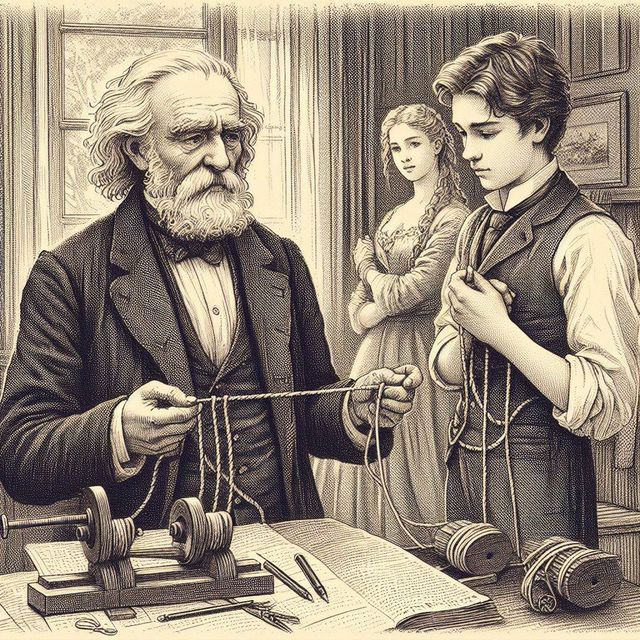-
Vijay Fafat
- Published on
A cute, tall-tale about one Professor Brooks - presumably one of mathematics - his past student, Barr, and his 19-year old niece, Susan Wayne. The two youngsters are in love with each other but the Professor had not yet consented to their union because, as he tells Barr:
“You are not, at present, worth a decent girl’s acceptance. [,,,] You are a babe in swaddling clothes. You have never once kicked out a leg on your own independent account. Susan agreed to tolerate you on the theory that you might turn out to he, hereafter, less of a prig and a poke than you appear now. I have yet to be satisfied that she has any grounds for her expectation. I even question your love for her. It is only her pretty outside that has attracted you.”
Barr, of course, remonstrates vehemently, professing a soulful love for Susan. So the professor decides to put him to a test. He first asks Barr if he believes in the fourth dimension of space, an idea which Barr dismisses as “a mathematical lark which nobody believes”. So the professor shows him a small coil of rope with a knot in it and claims that a woman had taken a perfectly normal, unknotted loop of rope and given it a shake in the fourth dimension to end up with a knot, something impossible to do in three dimensions without cutting the rope. Barr does not know what to believe but tells the professor that while his disbelief in the fourth dimension might be wavering following the professor’s claim, his love for Susan remained just as strong, not subject to any wavering. So then the professor goes through an elaborate theory of dimensional scales, invariance of measurement ratios if everything were to change size by the same factor, how a movement in the fourth dimension would shield one from any global change of scale in 3 dimensions and the like. Barr (and likely, the reader) has no idea where all this mathematical talk is leading but plays along. Finally, the Professor demonstrates the reality of the fourth dimension by making his niece disappear in the higher spatial dimension, from where she emerges to be just 6 inches tall… Magic realism at its best.
Barr loses his nerve and hems and haws about how he loves the miniature Susan but cannot really marry her and so on. Susan also feels the Professor has played an unfair trick on Barr. So then the Professors unravels his magic. It was all an exercise in hypnotism to test their love and to fortify it against unexpected occurrences in the future. The fourth dimension, if one exists, was not to be tested that evening. Geometry was the magician’s head-fake in this instance.
A bit hurried in the end but still worth a good smile.
